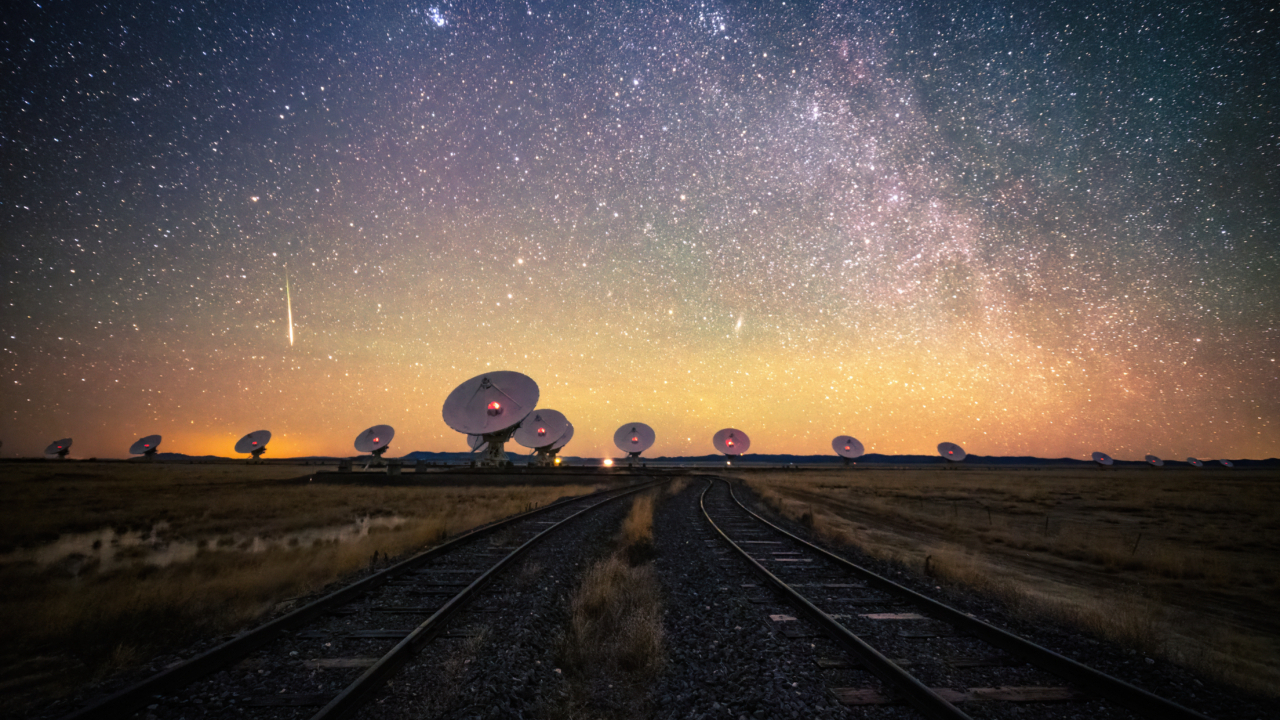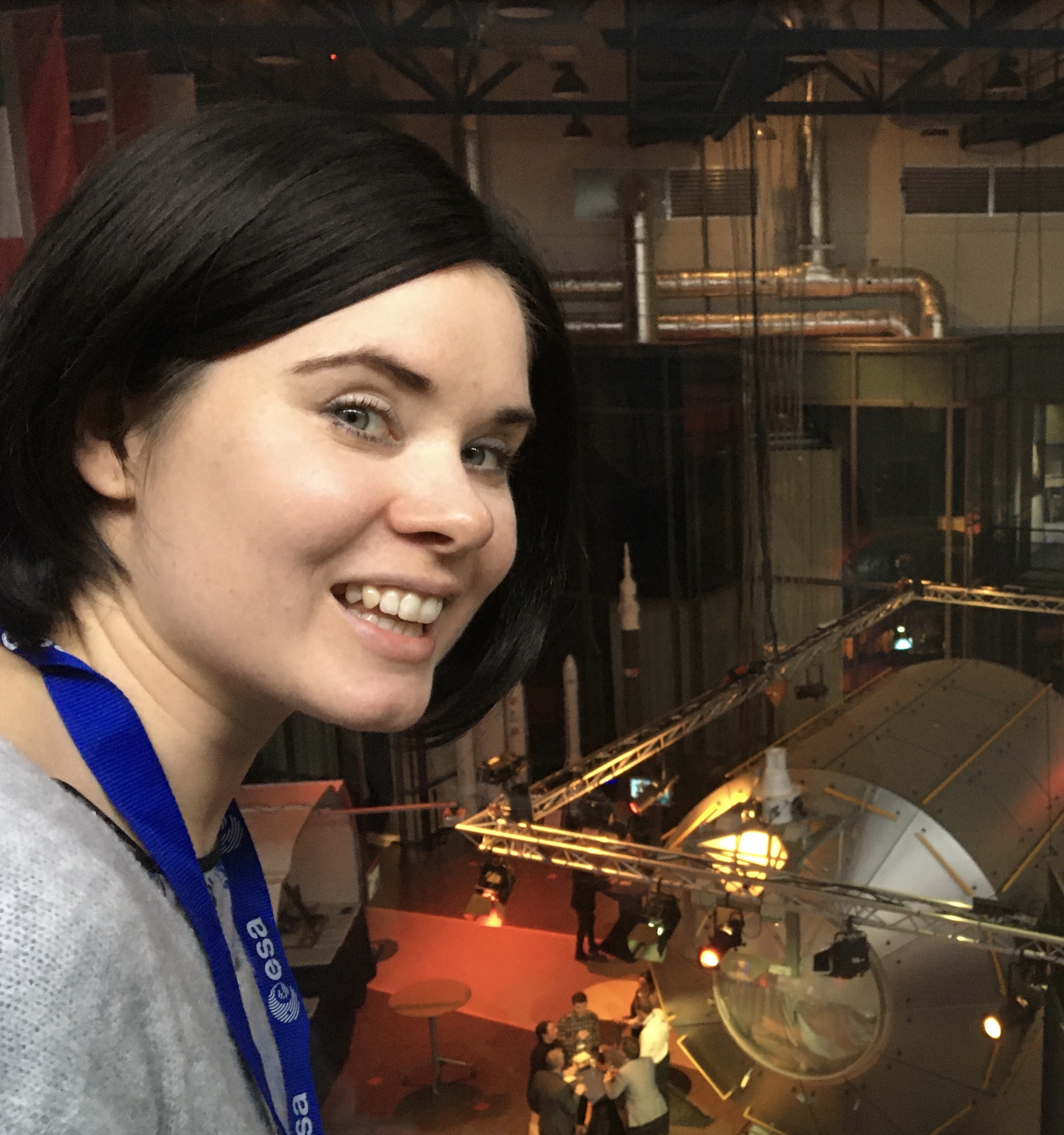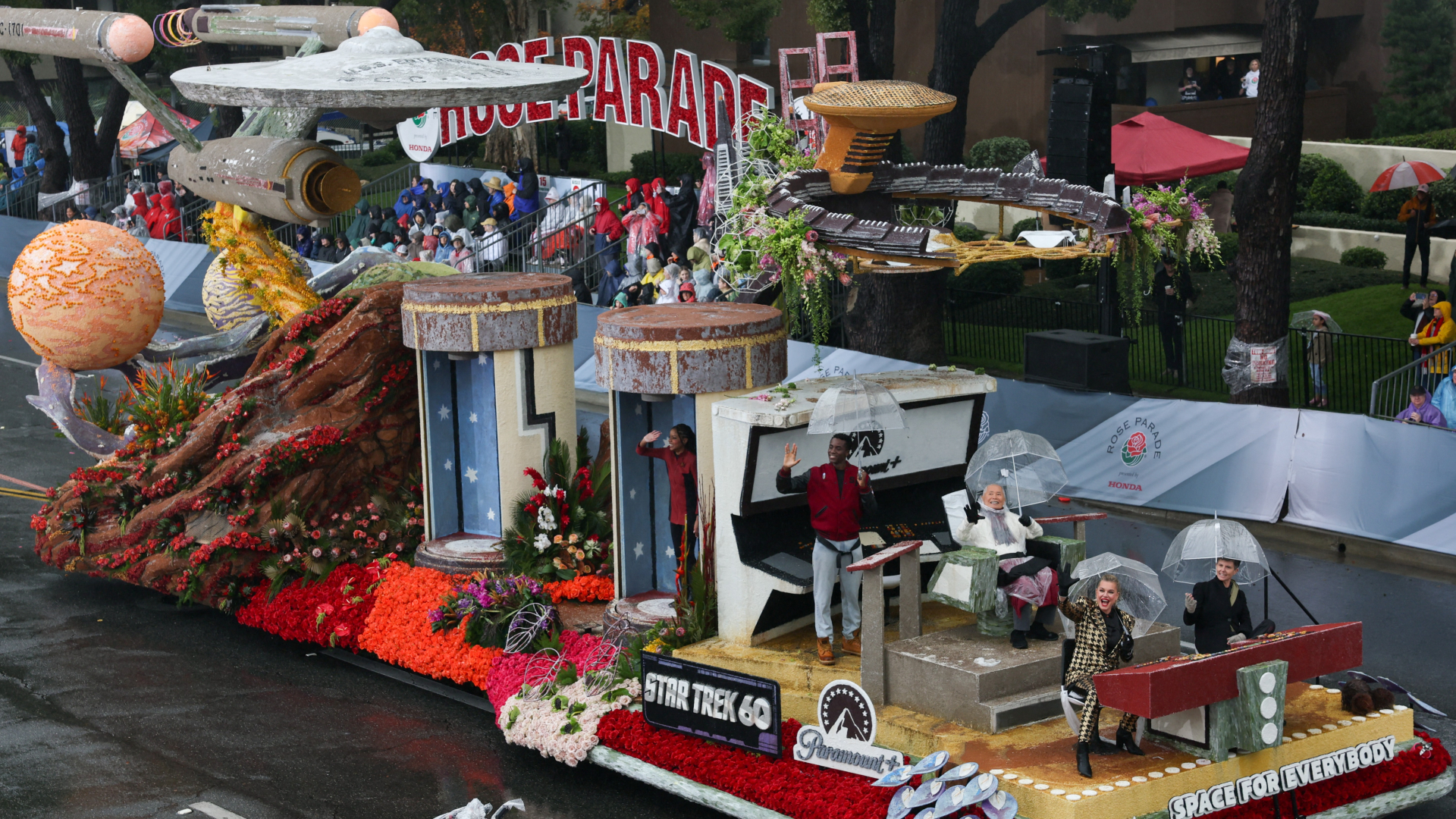SpaceX partners with astronomers to protect radio astronomy from satellite interference
Satellites in low Earth orbit currently disrupt radioastronomical observations hundreds of times a day.

An automated data-sharing system co-developed by SpaceX and American radio astronomers promises to protect radio telescopes around the world from disruptive interference from satellites in low Earth orbit (LEO).
Big constellations such as SpaceX's Starlink bring high-speed internet to people in remote, under-connected areas. But they also stain optical telescope images with streaks and disrupt observations by radio telescopes — highly sensitive antennas designed to detect weak radio waves emitted by distant galactic cores, black holes and neutron stars.
Astronomers building the Square Kilometre Array Observatory (SKAO) in Australia and South Africa, for example, have said that radio interference from LEO satellites could obscure signals that indicate the presence of alien life outside the solar system and drown out radiation coming from the most distant galaxies.
A team of researchers from the U.S. National Radio Astronomy Observatory (NRAO) has spent three years working on a solution. Together with SpaceX, the scientists developed a complex data-sharing system that in real time informs the Starlink system about scheduled telescope observations, including the frequencies in which astronomers plan to observe. When the satellites fly over the telescopes, the system orders them to redirect their beams away from the sensitive antennas or to mute their electronics.
"The good news is that it's autonomous on both sides," Chris De Pree, deputy spectrum manager at the NRAO, told Space.com. "We are sending information in real time to SpaceX about what the telescope is doing, their system digests it and issues commands to the satellites that are approaching the telescope."
De Pree led a team that has worked with SpaceX since 2022 to develop the solution. It consists of two components — the Operational Data Sharing (ODS) system, which sends the observing schedules to Starlink, and the Starlink Telescope Boresight Avoidance algorithm, which then orders the satellites to redirect their beams. (Boresight refers to the alignment axis in which a telescope observes.)
The system has been successfully tested at the NRAO's Very Large Array (VLA) in New Mexico since August 2024 and will soon commence further tests at other facilities, including the nearby Very Long Baseline Array and the Green Bank Telescope in West Virginia.
Breaking space news, the latest updates on rocket launches, skywatching events and more!
VLA, located in the desert near the city of Socorro, consists of 28 radio antennas, each of which is 82 feet (25 meters) wide. The array, built in the 1970s, has made significant contributions to our understanding of black holes, young stars and the motions of the Milky Way galaxy's core. Shortly after the deployment of the first Starlink satellites in 2019, however, astronomers realized that the advent of satellite megaconstellations could seriously impair the telescope's ability to study the universe in the future.
"For decades, radio astronomers have been building telescopes at remote sites to avoid radio frequency interference," De Pree said. "We understood that there would always be some radio interference near the horizon, but as the telescope's sensitivity is mostly amplified toward one small portion of the sky, it wasn't such a problem. But with satellite constellations, there are now potentially thousands of sources of radio frequency interference directly above the telescopes."
Cosmic radio waves, travelling across distances of millions of light-years, are much fainter than radio signals used on Earth for radio or TV broadcasting and cellular telephony or WiFi. Sensitive radio telescopes are therefore usually surrounded by radio-quiet zones where no broadcasting or wireless communication devices are allowed. But no one bans satellites from overflying such zones. In fact, De Pree said, hundreds of satellites pass over the VLA every day.
"Nowhere is remote anymore," De Pree said.
And it's bound to get worse. Some 3,000 satellites were orbiting Earth in 2019 when SpaceX began launching the Starlink constellation. The broadband-beaming fleet has ballooned to more than 8,000 operational spacecraft since those first deployments, pushing the total number of satellites circling Earth to over 15,000. And SpaceX is not yet done with the Starlink expansion, aiming for over 40,000 satellites in the next decade.
Other players — including Amazon with its Project Kuiper and the Chinese efforts Spacesail and Guowang — are deploying their fleets, too. By 2030, some 100,000 satellites could circle the planet, disrupting radio astronomy observations not hundreds of times per day but thousands.
Aware of this potential doomsday scenario, the NRAO team reached out to SpaceX already in 2021 to discuss a fix.
"Radio telescope electronics are very sensitive; they weren't developed to handle such strong signals [as the satellites produce]," said De Pree. "It's as if somebody is yelling at you. What frequently happens is that this noise doesn't only affect the frequency band that they are transmitting in but a much broader region of the spectrum."
In the 1950s, the International Telecommunication Union reserved a small portion of the radio spectrum for radio astronomy, a set of bands on which no users are allowed to broadcast their signal. But satellite operators have been increasingly encroaching on that spectrum. On top of that, astronomical objects don't emit radiation solely within the protected bands, meaning that radio astronomers are always looking to get a glimpse of those distant sources in other than the reserved wavelengths.
"The challenge to radio astronomy is that a lot of these spectrum regions that used to be pretty quiet in the past are now being filled with transmissions," said De Pree. "So, as we start to lose more and more of those little chunks, the time that we need to complete our observations goes up."
De Pree thinks the new system could be adapted for other major radio telescopes around the world, allowing radio astronomers to continue their work in the decades to come. He hopes that not just other observatories but other satellite operators will also adopt the technology, potentially allowing radio astronomy and internet-beaming constellations to coexist in peace.

Tereza is a London-based science and technology journalist, aspiring fiction writer and amateur gymnast. She worked as a reporter at the Engineering and Technology magazine, freelanced for a range of publications including Live Science, Space.com, Professional Engineering, Via Satellite and Space News and served as a maternity cover science editor at the European Space Agency.
You must confirm your public display name before commenting
Please logout and then login again, you will then be prompted to enter your display name.
